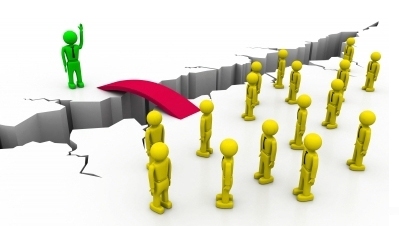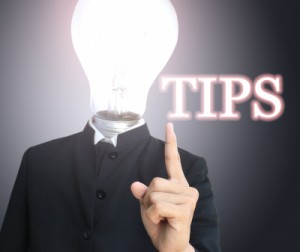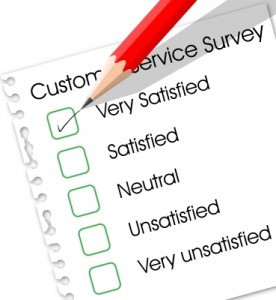It\’s a common scenario – businesses expending energy on building traffic and generating followers to boost brand awareness. There\’s always excitement emanating from all the talk about the latest blogging or social media tips, and site owners find glee in watching site statistics grow.
The problem here is there\’s so much focus on driving traffic that we tend to forget to close the deal and turn that traffic into leads and customers.
Email marketing can bridge this gap. It\’s a key element in every online marketing sales funnel.
 Source
Offering premium content and periodical e-letters can do wonders to hook the audience and eventually lead them to interact with the brand. More importantly, your emails should vary in content and approach because the emails you send to your regular audience and your message to new visitors should be vastly different.
Enter email autoresponders.
You probably already know this, but an email autoresponder allows you to set up an email or a series of emails to automatically send them at a pre-determined time.
Contrary to the misconception, autoresponders don\’t have to be long newsletters or connected to opt-in email campaigns only. They can also be used to deliver, among other things, a free online course where subscribers receive the lessons at weekly intervals.
Here are good ideas on how to use autoresponders.
Source
Offering premium content and periodical e-letters can do wonders to hook the audience and eventually lead them to interact with the brand. More importantly, your emails should vary in content and approach because the emails you send to your regular audience and your message to new visitors should be vastly different.
Enter email autoresponders.
You probably already know this, but an email autoresponder allows you to set up an email or a series of emails to automatically send them at a pre-determined time.
Contrary to the misconception, autoresponders don\’t have to be long newsletters or connected to opt-in email campaigns only. They can also be used to deliver, among other things, a free online course where subscribers receive the lessons at weekly intervals.
Here are good ideas on how to use autoresponders.
 Source
This can give people a good reason to subscribe to your emails. Provide an ultimate guide that thoroughly discusses an aspect of your niche and deliver it in the form of a mini-course intended to be sent in multiple parts. You can send the lessons weekly or even daily and your subscribers will have something to look forward to.
For example, you can offer \”Advanced SEO Techniques\” or \”Get a Huge Jump in Blog Traffic in 30 Days\” or \”Steps to Become a Writer for Search Engines\”. Turn them into an email series people can get by signing up. Consider giving subscribers tasks to do with every lesson to make it more interactive.
Source
This can give people a good reason to subscribe to your emails. Provide an ultimate guide that thoroughly discusses an aspect of your niche and deliver it in the form of a mini-course intended to be sent in multiple parts. You can send the lessons weekly or even daily and your subscribers will have something to look forward to.
For example, you can offer \”Advanced SEO Techniques\” or \”Get a Huge Jump in Blog Traffic in 30 Days\” or \”Steps to Become a Writer for Search Engines\”. Turn them into an email series people can get by signing up. Consider giving subscribers tasks to do with every lesson to make it more interactive.
 Source
Upselling is a sales technique where the seller induces a customer to buy upgrades, related offers or more expensive products. The main purpose is usually to make a bigger sale.
In the case of email marketing, when someone buys a product, you can send an email one to several weeks later to offer a similar item. So, if you offer merchandise associated with a popular TV show for example, and someone buys a T-shirt with the show\’s logo, email the customer a few weeks later to promote a coffee mug merchandise related to the same TV show.
Source
Upselling is a sales technique where the seller induces a customer to buy upgrades, related offers or more expensive products. The main purpose is usually to make a bigger sale.
In the case of email marketing, when someone buys a product, you can send an email one to several weeks later to offer a similar item. So, if you offer merchandise associated with a popular TV show for example, and someone buys a T-shirt with the show\’s logo, email the customer a few weeks later to promote a coffee mug merchandise related to the same TV show.
 Let\’s say you have a home improvement supply store. You can gather email addresses from customers and promise to send tips on home building and home improvement because many love DIY projects. This technique is applicable to different businesses. If you sell food products, you can send recipes, or if you have a blog about scrapbooking, you can offer designing tips and ideas, and so on.
An autoresponder will allow you to send useful tips weekly or as often as your subscribers prefer. Over time, you will build your brand and enhance customer relationships.
Let\’s say you have a home improvement supply store. You can gather email addresses from customers and promise to send tips on home building and home improvement because many love DIY projects. This technique is applicable to different businesses. If you sell food products, you can send recipes, or if you have a blog about scrapbooking, you can offer designing tips and ideas, and so on.
An autoresponder will allow you to send useful tips weekly or as often as your subscribers prefer. Over time, you will build your brand and enhance customer relationships.
 Source
A lot of Internet users go online to find reviews full of insight and crafty writing. There is a plethora of topics you can cover, including gadgets, software, books, movies, TV shows, comics and e-books.
Source
A lot of Internet users go online to find reviews full of insight and crafty writing. There is a plethora of topics you can cover, including gadgets, software, books, movies, TV shows, comics and e-books.
 Source
Offering premium content and periodical e-letters can do wonders to hook the audience and eventually lead them to interact with the brand. More importantly, your emails should vary in content and approach because the emails you send to your regular audience and your message to new visitors should be vastly different.
Enter email autoresponders.
You probably already know this, but an email autoresponder allows you to set up an email or a series of emails to automatically send them at a pre-determined time.
Contrary to the misconception, autoresponders don\’t have to be long newsletters or connected to opt-in email campaigns only. They can also be used to deliver, among other things, a free online course where subscribers receive the lessons at weekly intervals.
Here are good ideas on how to use autoresponders.
Source
Offering premium content and periodical e-letters can do wonders to hook the audience and eventually lead them to interact with the brand. More importantly, your emails should vary in content and approach because the emails you send to your regular audience and your message to new visitors should be vastly different.
Enter email autoresponders.
You probably already know this, but an email autoresponder allows you to set up an email or a series of emails to automatically send them at a pre-determined time.
Contrary to the misconception, autoresponders don\’t have to be long newsletters or connected to opt-in email campaigns only. They can also be used to deliver, among other things, a free online course where subscribers receive the lessons at weekly intervals.
Here are good ideas on how to use autoresponders.
Best Ways to Use Autoresponders
This is basically a list of profitable materials you can send via autoresponders.1. Mini course
 Source
This can give people a good reason to subscribe to your emails. Provide an ultimate guide that thoroughly discusses an aspect of your niche and deliver it in the form of a mini-course intended to be sent in multiple parts. You can send the lessons weekly or even daily and your subscribers will have something to look forward to.
For example, you can offer \”Advanced SEO Techniques\” or \”Get a Huge Jump in Blog Traffic in 30 Days\” or \”Steps to Become a Writer for Search Engines\”. Turn them into an email series people can get by signing up. Consider giving subscribers tasks to do with every lesson to make it more interactive.
Source
This can give people a good reason to subscribe to your emails. Provide an ultimate guide that thoroughly discusses an aspect of your niche and deliver it in the form of a mini-course intended to be sent in multiple parts. You can send the lessons weekly or even daily and your subscribers will have something to look forward to.
For example, you can offer \”Advanced SEO Techniques\” or \”Get a Huge Jump in Blog Traffic in 30 Days\” or \”Steps to Become a Writer for Search Engines\”. Turn them into an email series people can get by signing up. Consider giving subscribers tasks to do with every lesson to make it more interactive.
2. Paid training course or product
Just like the aforementioned item, this is intended to be sent in segments at a regular schedule, although it\’s going to require a bigger amount of work. Since it\’s going to be a paid training course, it\’s already a product. Don\’t be fazed by all the work you have to put into this because it will be well worth it.3. Product re-launching
If you have an e-book or some other product you previously launched, you can launch it again through a mini-promotion. One example is webcomic artists promoting their already-released books, or offering discounts.4. Upselling
 Source
Upselling is a sales technique where the seller induces a customer to buy upgrades, related offers or more expensive products. The main purpose is usually to make a bigger sale.
In the case of email marketing, when someone buys a product, you can send an email one to several weeks later to offer a similar item. So, if you offer merchandise associated with a popular TV show for example, and someone buys a T-shirt with the show\’s logo, email the customer a few weeks later to promote a coffee mug merchandise related to the same TV show.
Source
Upselling is a sales technique where the seller induces a customer to buy upgrades, related offers or more expensive products. The main purpose is usually to make a bigger sale.
In the case of email marketing, when someone buys a product, you can send an email one to several weeks later to offer a similar item. So, if you offer merchandise associated with a popular TV show for example, and someone buys a T-shirt with the show\’s logo, email the customer a few weeks later to promote a coffee mug merchandise related to the same TV show.
5. Offer trial versions of products
Sometimes, people who get a taste of something delicious eventually want the whole pie, which is why trial versions of products are very effective. This works great if you provide software, courses, memberships, eBooks and the like. You can also advertise the free trial on your blog or website to grow your email list. Make sure your instructions for getting the free trial are crystal clear, and don\’t make them jump through hoops to get the free stuff. After they\’ve obtained the free items, follow up to close the sale.6. Newsletter
There are high-quality autoresponders out there easily available at your disposal that will manage your subscriptions and follow up valuable prospects. Newsletters can both inform everyone about products or services, and help build your reputation as an industry expert.7. Newsletter for affiliates
Send information about sales you\’re running and other promotional materials your affiliates can use to boost their own commissions. You can also give pieces of advice, tips, how-to\’s and techniques.8. Tips
 Let\’s say you have a home improvement supply store. You can gather email addresses from customers and promise to send tips on home building and home improvement because many love DIY projects. This technique is applicable to different businesses. If you sell food products, you can send recipes, or if you have a blog about scrapbooking, you can offer designing tips and ideas, and so on.
An autoresponder will allow you to send useful tips weekly or as often as your subscribers prefer. Over time, you will build your brand and enhance customer relationships.
Let\’s say you have a home improvement supply store. You can gather email addresses from customers and promise to send tips on home building and home improvement because many love DIY projects. This technique is applicable to different businesses. If you sell food products, you can send recipes, or if you have a blog about scrapbooking, you can offer designing tips and ideas, and so on.
An autoresponder will allow you to send useful tips weekly or as often as your subscribers prefer. Over time, you will build your brand and enhance customer relationships.
9. Free reports
Free reports can show the quality of your service, but make sure not to mix sales letters with the reports because that may turn off potential customers.10. Showcasing your expertise
Nothing says you\’re an expert better than a gallery or portfolio of your completed projects, whether you\’re a writer, photographer, graphic designer, architect, florist or painter. The series of emails can be sent monthly and you can send, if you\’re a photographer, images from a client photo shoot. The next time your prospects look for a photographer, they will remember you.11. Quizzes
Creative quizzes are fun and can motivate visitors to opt in. Tell site visitors they can get quizzes, aside from news and updates when they subscribe. Also, when you provide quizzes on your site, you can collect the emails of anyone who took the quiz. This can also work with contests.12. Reviews
 Source
A lot of Internet users go online to find reviews full of insight and crafty writing. There is a plethora of topics you can cover, including gadgets, software, books, movies, TV shows, comics and e-books.
Source
A lot of Internet users go online to find reviews full of insight and crafty writing. There is a plethora of topics you can cover, including gadgets, software, books, movies, TV shows, comics and e-books.
